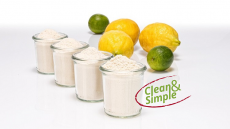Hydrocolloid 2007 round-up
in 2008, while more progress is being made to meet growing demand
for organic products, according to market analyst IMR
International.
Prices A number of hydrocolloid firms have announced price increases across their product range over the last quarter.
According to IMR , "it is the reality of market pressures, however, that is dictating price increases rather than formal announcements."
These pressures, which have been increasingly squeezing margins and sending up prices, include higher energy costs and higher raw material costs, with prices for pulp and seaweed reaching near record high levels.
CP Kelco in October said it is raising prices across its range of cellulose and gum ingredients.
The firm said price increases would enter the double-digit range and would affect pectin, carrageenan, carboxymethyl cellulose, cellulose gum, gellan gum, xanthan gum and welan gum.
In the same month FMC Biopolymer also announced price hikes across its product range.
It said its Avicel line, together with related brands of its food and pharmaceutical grade microcrystalline cellulose and cellulose gel will see price rises of four to eight percent.
Prices for FMC's carrageenan products will increase four to six percent.
Alginate supplier International Specialty Products (ISP) also said prices will increase 10-15 percent for all its propylene glycol alginate products.
However, the implementation of price increases is not without its challenges.
Like all sectors, ingredients firms find themselves squeezed between rising costs they can no longer sustain, and customers unwilling to pay more for their products.
Food and beverage manufacturers, often unwilling or unable to absorb the extra cost due to challenges of their own, may turn to alternative products for their formulation needs, as seen in the move by some companies towards dairy alternative ingredients after dairy prices shot up this year.
Another scenario, and one that ingredients makers are wary of, is that companies will look to cheaper Chinese production.
Such challenges place restraints on western ingredients firms, preventing reinvestment in the market and innovation.
According to IMR, "it is good for both producers and users, to retain some level of profitability which can sustain the specialty nature and future innovation in hydrocolloids".
Organic "Consumer demand for healthier and more nutritious food has created opportunities for differentiation at the food company level AND also at the ingredient supplier level.
Seeking organic status has become one way of differentiation," said the analyst.
On December 18, 2007 the National Organic Standards Board (NOSB) in Washington, DC voted unanimously to recommend gellan gum for addition to the USDA National Organic Program (NOP) list.
The petition to NOSB was submitted by CP Kelco, which produces gellan gum under its Kelcogel brand.
According to IMR, the recommendation has yet to be approved and converted into law, but it is most likely to pass in the next six to nine months.
The FDA definition of gellan gum cites isopropanol as the precipitating agent to be used in production.
Other hydrocolloids are also listed on the approved list for use in organic foods, but regulations are complex, according to IMR.
"If an organic version of an agricultural hydrocolloid (e.g. arabic, guar and LBG) is available then it must be used in organic foods rather than rely on being listed in Section 205.605 or 205.606," said the analyst.
"Organic versions of hydrocolloids command a premium of up to 30 percent and sometimes 40 percent."
IMR breaks down the listing of hydrocolloids as follows: Non-synthetic The 'non-synthetics' part of section 205.605 of Title 7 of the Code of Federal Register (CFR) lists alginic acid , agar and carrageenan .
Synthetic Alginates , pectin (LM only) and xanthan are listed in the 'Synthetics' part of section 205.605.
Agricultural Most other hydrocolloids are listed in section 205.606 which includes 'Non-organically produced agricultural products'.
Gelatin , gum arabic , guar , LBG , konjac flour , pectin (HM) and starches are all included in this section of regulations.
Seaweed extracts are 'non-agricultural' but gelatin is 'agricultural'.





















